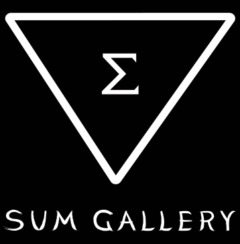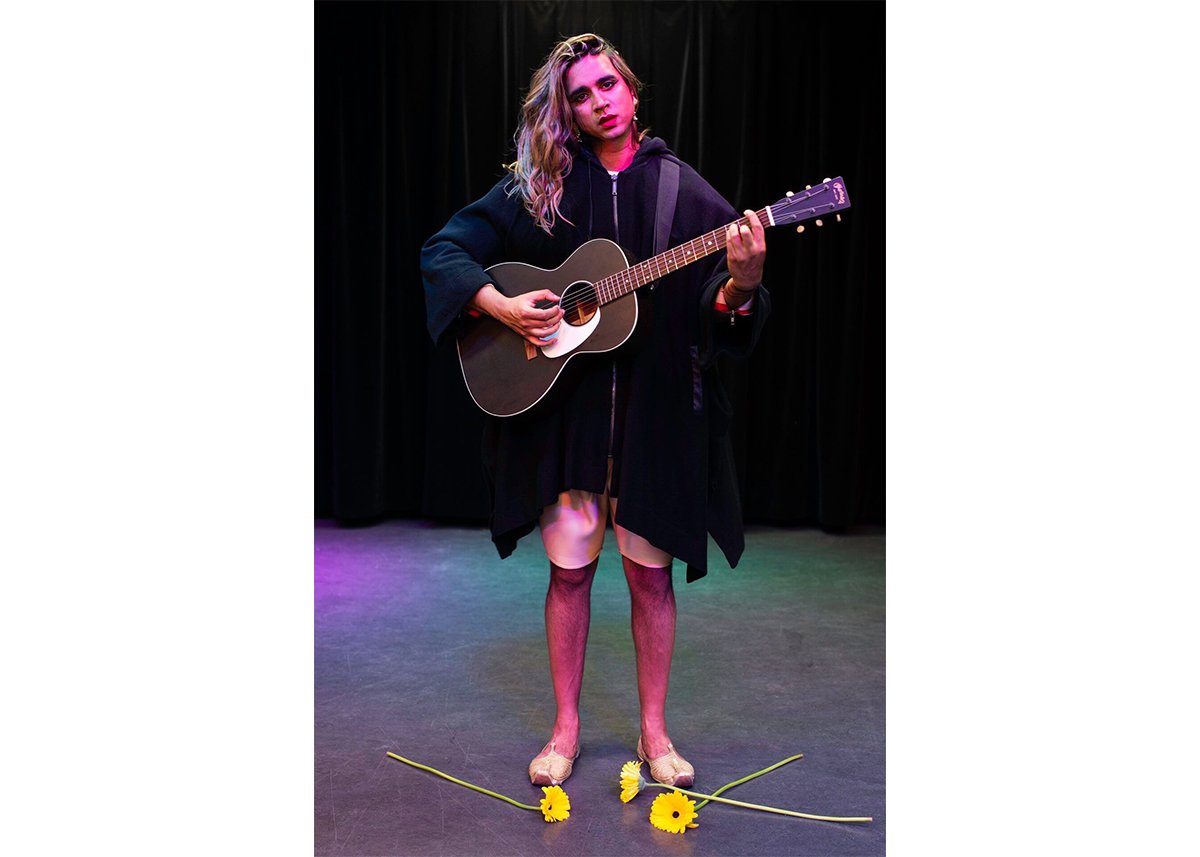Galleries West | April 14, 2021
Trauma Clown, by Vivek Shraya, on view as part of the Capture Photography Festival at Vancouver’s SUM Gallery until July 1, is a soft but potent critique of audiences and viewing institutions in an era of virtue signalling.
The Trauma Clown is the effect of the very contemporary thirst for stories of suffering. In a series of 10 portrait-like photographs, Shraya’s performer steps progressively deeper into the role of the clown, to greater and greater praise and public affection. This series questions the emphasis on trauma narratives in queer artistic expression. What is the danger of trading stories of trauma and redemption as cultural currency?
Shraya plays the character of the emerging artist, steadily revealing more of herself until she becomes the caricature of her suffering. She moves from the Lovesick Clown, a hoody-wearing, guitar-strumming singer-songwriter to unveil the clown with increasing intensity. This steady transformation plays across her body and weaves a deft relationship between the audience’s desire for her to expose more of herself and the increasing commodification of her performance.
In the sixth photograph, she is finally the Trauma Clown: on her knees among piles of flowers, her clown makeup streaked by sweat and tears, arms open in full availability to the unseen crowd. From this triumphalism, she begins to fade from view. Gallery Clown sets her inside the window of an iPhone, while Media Clown is an ‘image of her image’ in a magazine. Ultimately, in Your Clown, she is a framed photo on your wall, among the artful tableau of your things.
Prepare to be implicated. Shraya takes aim at mainstream audiences, art institutions and popular narratives. In an interview with Shraya and curator SD Holman on the show’s opening weekend, Holman pointed to the effect of the trauma narrative in the reality television show RuPaul’s Drag Race – the ways in which sad backstories propel participants to victory. Shraya’s point is that the demand for stories of queer oppression have become the bread and butter of the queer artist in the mainstream media.
If, as a viewer, you come to this show as a member of the mainstream (white, straight, cis to be sure), however educated you may be, the temptation might be to connect these photographs to drag. This would be an easy misconception since the photographs are not accompanied by any text. It’s left to the audience to get things going, so one might find oneself mentally thumbing the pages of Judith Butler’s Gender Trouble to make connections between what is taught about drag and the trans body we see.
I was grateful that Shraya, in her talk, cautions her audience not to conflate transness with drag. As I see it, the connection to drag in Trauma Clown, if any, is more carefully embedded in the performance imagery, where hyperbolized acts form a critique of the institutions from which they are born.
Shraya’s exhibition is an opportunity for audiences to consider their role in the capitalist viewing machine, and the ways that looking can make objects of the real bodies we see. ■
Vivek Shraya: Trauma Clown at the SUM Gallery in Vancouver from April 1 to July 1, 2021.
Click here to view the original article in full.

